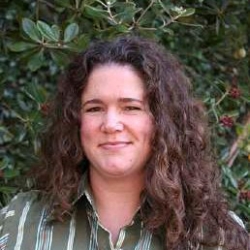Mary Leech

Contact Information
Biography
Education:
B.S. Geology - San Jose State University
Ph.D. Geological and Environmental Sciences - Stanford University
Research Description:
My research involves field work that has taken me to mountain belts all over the globe - the Indian Himalaya, the Dabie-Sulu belt in eastern China, the Scandinavian Caledonides of Norway, the Urals Mountains in Russia and the Kokchetav massif in Kazakhstan. While each is unique, these mountain belts have one thing in common: ultrahigh-pressure eclogite-facies rocks. The eclogites form in subduction zone complexes in the suture zones of mountain belts (where two continents are essentially stitched together) and record a complete pressure-temperature-time history from comprising the edge of a continent, to subduction into the upper mantle and then the return path back to the surface. An ever-increasing number of these subduction zone complexes contain evidence that eclogites were subducted to depths in the upper mantle where pressures are great enough to form microscopic diamond (>100 km or >70 miles) thus making them ultrahigh-pressure rocks. Study of these subduction zone complexes involves investigation into not only the petrology and geochemistry of these rocks but also large-scale processes of continental collision and subduction, crust-mantle interactions and the tectonics of mountain building.
My research has required a variety of analytical techniques, in which undergraduate and graduate students have already been involved: radiometric dating (U-Pb dating of zircon on an ion microprobe [SHRIMP] using cathodoluminescence imaging, and apatite fission-track dating); establishing mineral chemistry using an electron microprobe; investigating the graphite-diamond transition using x-ray diffraction, raman and infrared spectroscopy, and scanning and transmission electron microscopy; and stable isotope analyses of carbon, oxygen, and nitrogen using infrared CO2 and in-situ UV laser ablation mass spectrometry and on an elemental analyzer.